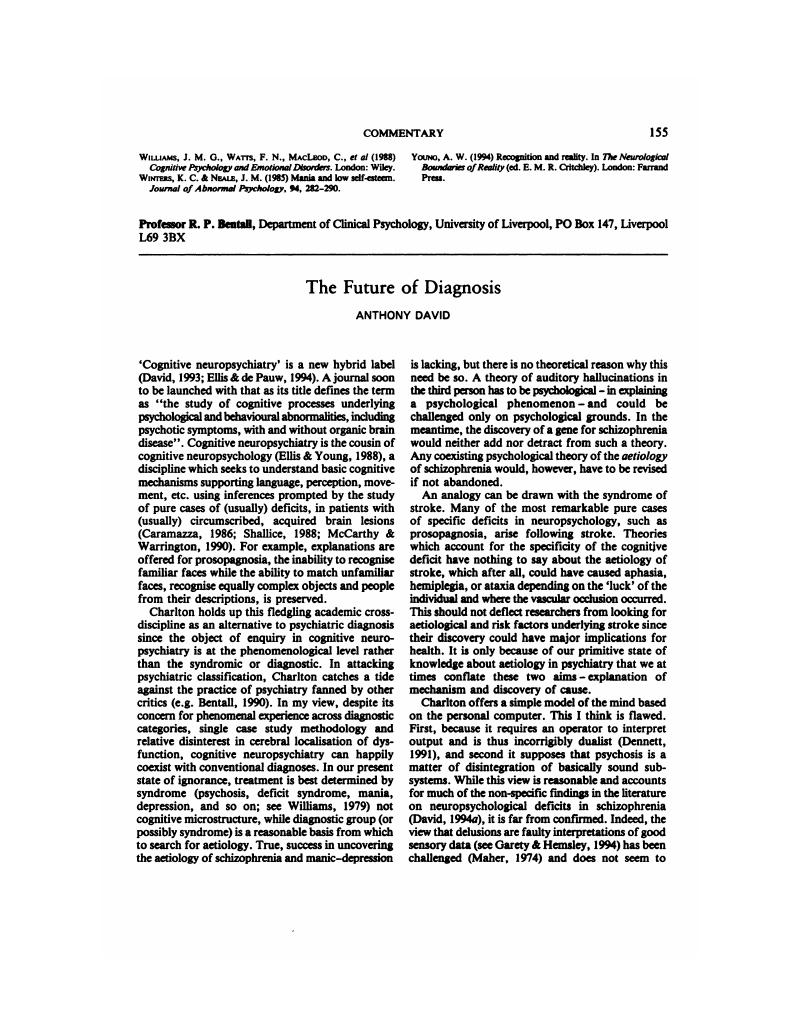Crossref Citations
This article has been cited by the following publications. This list is generated based on data provided by Crossref.
Halligan, Peter W
and
David, Anthony S
2001.
Cognitive neuropsychiatry: towards a scientific psychopathology.
Nature Reviews Neuroscience,
Vol. 2,
Issue. 3,
p.
209.
Lunt, Laura
Bramham, Jessica
Morris, Robin G.
Bullock, Peter R.
Selway, Richard P.
Xenitidis, Kiriakos
and
David, Anthony S.
2012.
Prefrontal cortex dysfunction and ‘Jumping to Conclusions’: Bias or deficit?.
Journal of Neuropsychology,
Vol. 6,
Issue. 1,
p.
65.




eLetters
No eLetters have been published for this article.